Up to this point, western-ideals around marriage tradition, aesthetics, and symbolism have dominated the wedding industry. For many couples, this doesn’t accurately represent their cultures, relationships, or their families.
It is time to explore the prescribed traditions through the lens of inclusivity and find out what feels important to you as an individual and as a couple, without the pressure current wedding industry has dictated.
Do you want to wear a dress/ suit? Does your wedding party need to be singularly gendered? Would it feel more authentic to incorporate more of your family’s cultural traditions?
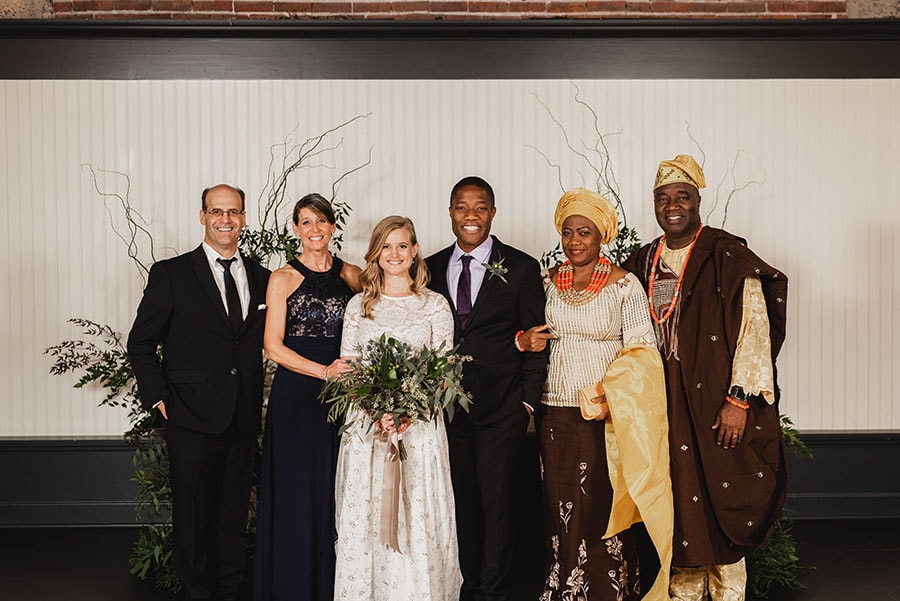
Below are several straightforward ways to make your wedding more inclusive, not just for you, but for everyone involved in pulling together your special day. But first let’s talk about the current state of inclusivity in the wedding industry.
The Conversation of Inclusion
Inclusion in the wedding industry is a broad topic, involving media, vendors, family members, and a whole lot of tradition. It’s a conversation that has thankfully been happening more loudly and is very welcome.
Many of the resources―provided online via various media and industry vendors―used for planning weddings have outdated language, assume western ideals are the norm, or are simply generic. This makes planning a wedding impractical and impersonal if you don’t fall within the thin scope of what is offered.
What is Inclusion & Why is it Important?
Often diversity and inclusion are lumped in together, but there’s a significant difference between the meaning of the two words.
Diversity is a start, but it can’t end there. It encourages labeling and can alienate people. Think “LGBTQIA+ Weddings” tabs on websites, rather than simply seeing people who identify this way represented alongside everyone else.
Diversity could simply mean there are many people physically represented at an event, but inclusion would indicate that each person feels comfortable enough to lead or participate―they feel welcomed.
Weddings are incredibly personal, and no couple should have to compromise on what feels representative of their relationship. More importantly, no one should feel alienated or marginalized. We are supposed to be celebrating love, afterall.
How can Inclusivity be made a Priority at Your Wedding?
If you want to push past the outdated and alienating aspects of weddings on a journey toward meaningful inclusivity, here are a few ways to get started.
Accessibility
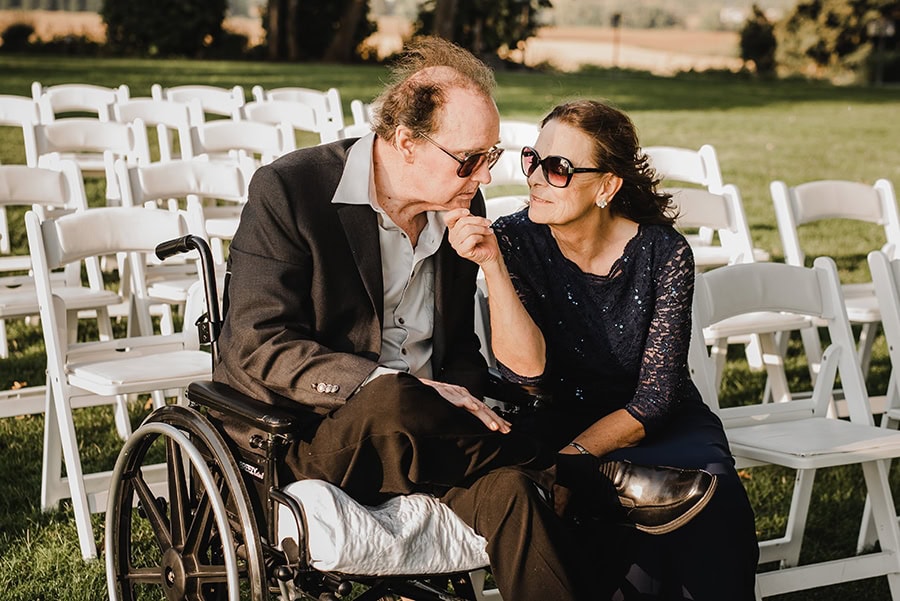
It’s important to not just think about inclusivity in terms of only gender and race. If people with disabilities are attending your wedding it’s important to consider their needs, and ensure that they are not an after thought when it comes to having access throughout the day.
Make sure that space is made available for those who might use a wheelchair when sitting at the ceremony and the reception. And if there are people with hearing impairments consider hiring a sign language interpreter.
Vendors
It would be great if there were a standard list of questions to ask of vendors to find out if they’re right for you, but given the variety of differences and services, it’s not that simple. Not all hope is lost, though; there are a few ways to help move the needle, even lacking a one-size-fits-all vetting strategy.
One way to put your money where your heart is is to spend your money with vendors who are, themselves, part of a marginalized community.
Generally, asking vendors directly about their values, as they apply to you, is also recommended. If this feels uncomfortable, consider having a friend or a Best Person do this for you to buffer the conversation.
When considering your catering vendors, keep in mind whether they can accommodate different dietary preferences so that those who might be vegetarian or vegan have menu options. Some bakeries even specialize in making entirely gluten free deserts.
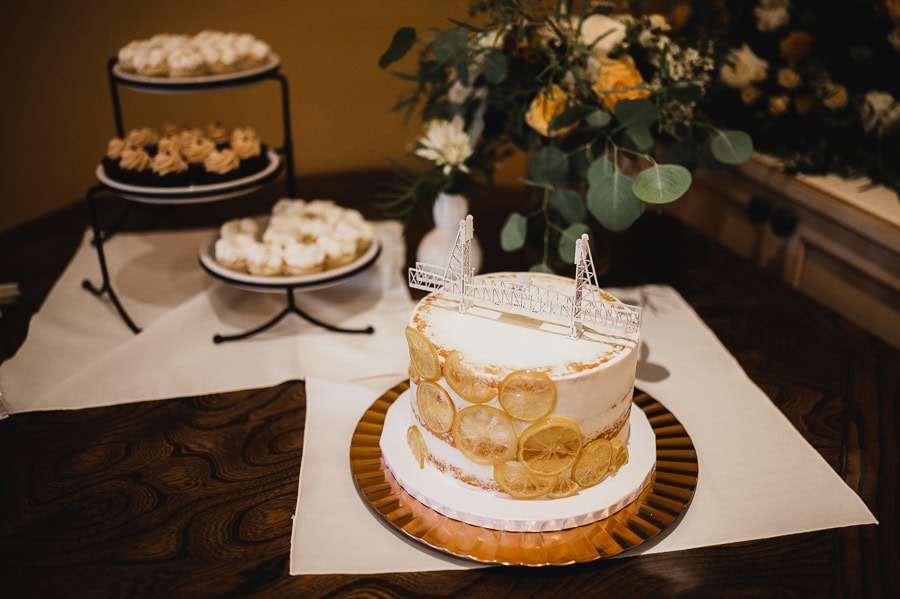
Service-based businesses are always looking for feedback on how they can improve and some may want to be inclusive, but not know how. A helpful suggestion or review of your experience might give that business the kick they needed to start their journey towards inclusion more earnestly.
If you aren’t, yourself, someone who belongs to a marginalized community, but wants to be an active ally, consider that there are likely people in your wedding party or on your guest list who are. By only hiring vendors who are inclusive, you’d be doing your part to change the industry for the better. Not to mention, make the people you care about feel respected and prioritized.
Language
Language is one of the most simple and powerful ways to indicate to people that you want to be inclusive. It helps avoid making incorrect assumptions and shows respect to others. Focusing on language and articulating carefully also helps us to be more thoughtful and accurate with our words.
Within the scope of a wedding, this can look a lot of ways.
Gender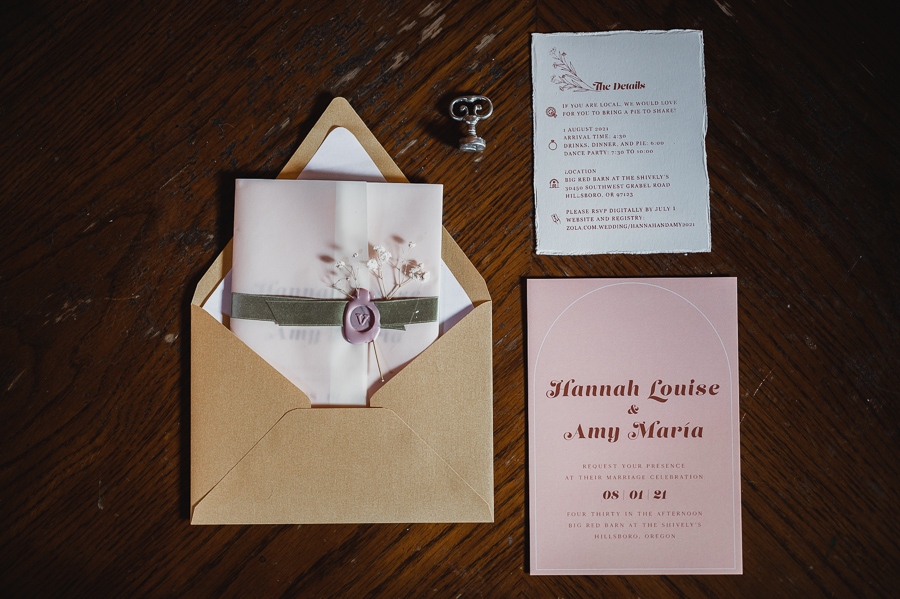
- Leave the Mr. Ms. Mrs. off of your RSVP and use your guests’ full names instead. It’s more personal and avoids making assumptions about how people identify.
- If it doesn’t feel imperative to attach yourself to the labels of Bride and Groom, consider ditching them where it’s not necessary. You can also use alternatives such as “newly wed” in place of bride and groom or “partner” instead of husband or wife.
- Honor your guests’ pronouns.
Race & Ethnicity
- Make the effort to learn the correct pronunciation of names and words from other cultures/languages as is relevant to your special day. It could be the name of a guest or a new tradition being introduced by your partner’s family, but regardless you’ll want to ensure you’re taking the time to be intentional.
- If you’re not of a specific ethnicity or culture, don’t appropriate language or tradition from that culture.
- Pick a venue that can accommodate and support all your guests, family members, cultural traditions, and faiths, regardless of background.
Traditions & Customs
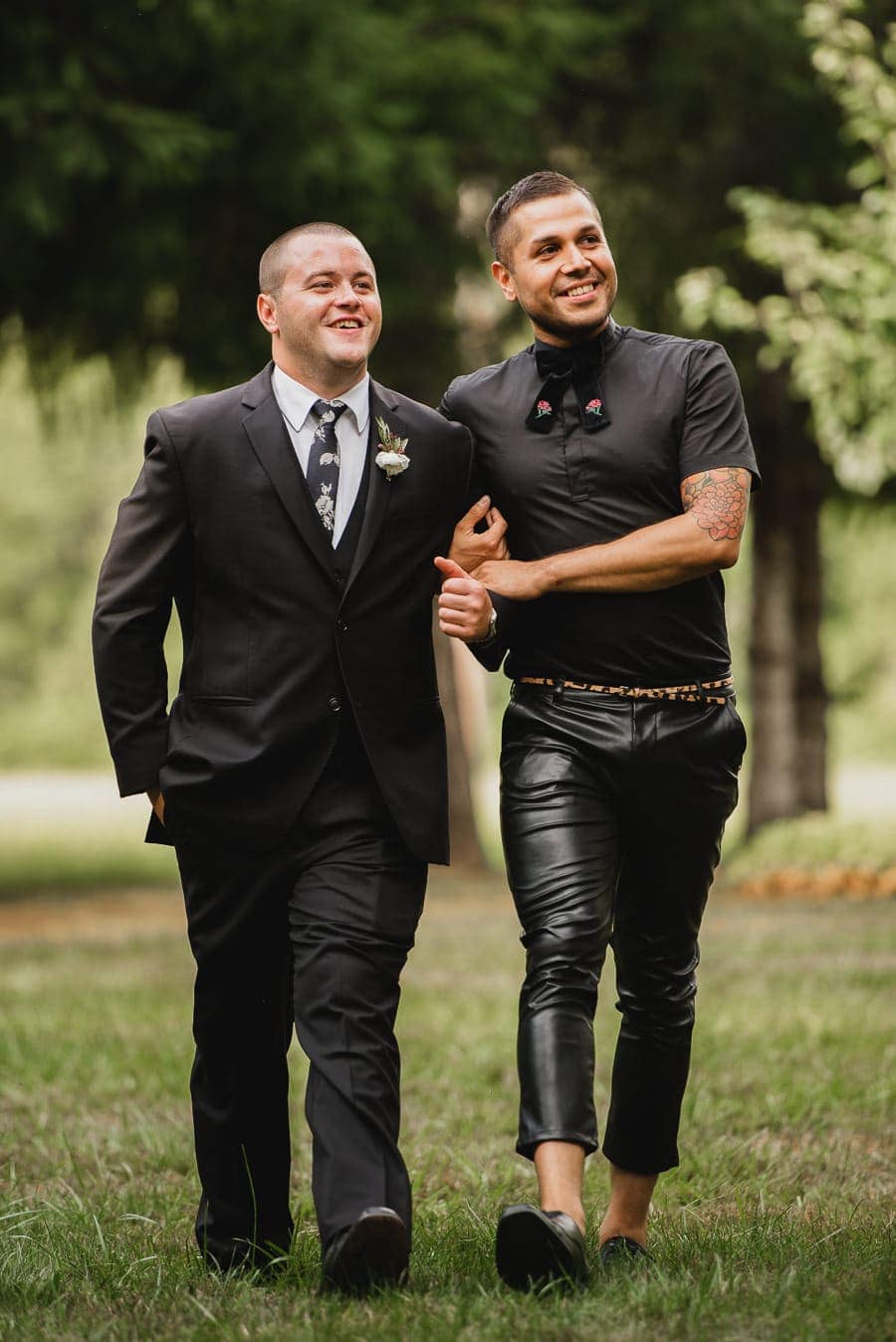
Challenging how you use flowers in your ceremony can be a simple solution to blurring the lines of tradition. Instead of assigning specific types of flower arrangements to perceived genders, allow your wedding party to choose. Flowers don’t have a gender, bouquets shouldn’t be limited to the bride.
Even the traditional processional march down the aisle can be reexamined. Do you both want to come down the aisle? This could be something you do together, separately, or you could meet in the middle. Does the “giving away” of one of the wedding party feel important to either of you?
Trends in weddings are increasingly pointing to curated ceremonies, and that doesn’t stop at décor. If a tradition or custom doesn’t feel applicable or appropriate, throw it out or reformulate it.
What If I Mess Up?
Perfection isn’t possible, especially where people are concerned, especially considering two people want to be treated the same, but practice does make progress, as they say!
This is your invitation to let go of perfectionism in favor of curiosity.
Essentially, it’s inevitable to bumble through things sometimes, so here are some tips to start making inclusivity your standard:
- Stay conscious of the language you use in your day-to-day life and how bias may be unintentionally affecting it.
- When you do make a mistake, acknowledge, learn from it, and avoid repeating the mistake.
- Share with others what you’ve learned through this practice about biased language and its effect on others.
- Be intentional with your language until the practice becomes second nature.
- Be consistent with your actions.
What is missing for you as a client?
I’d like to keep the conversation going, so leave a comment and share your experiences. What have been your experiences as you plan your wedding?
